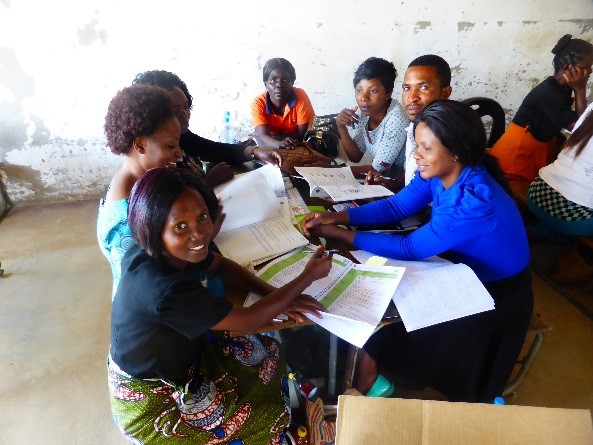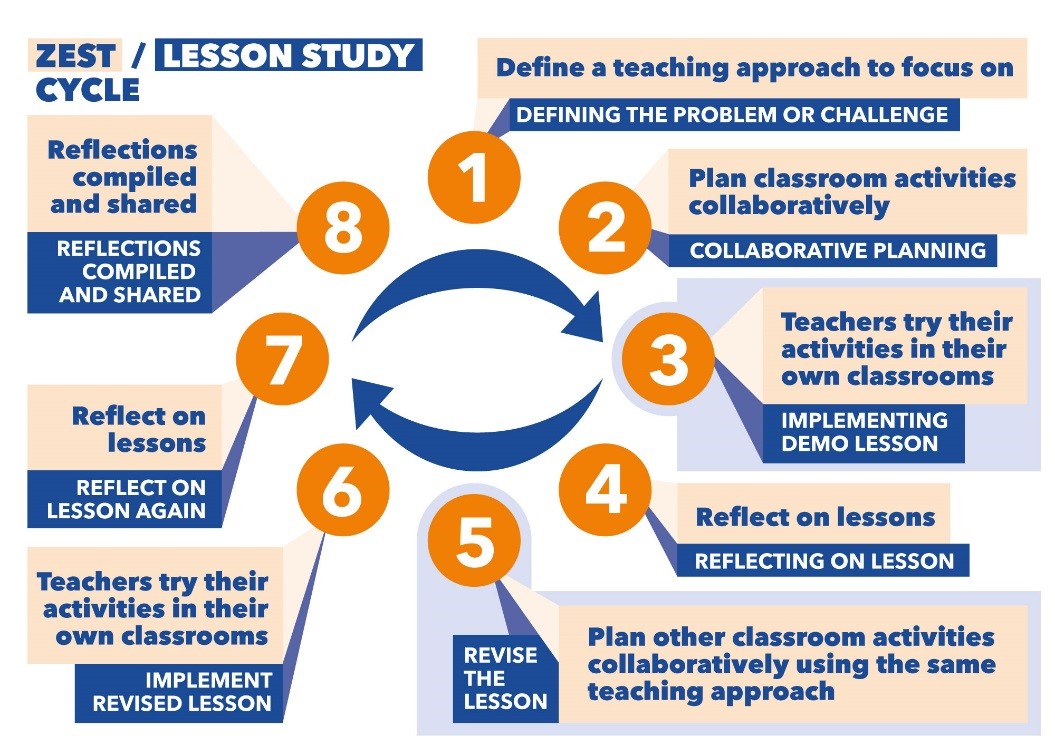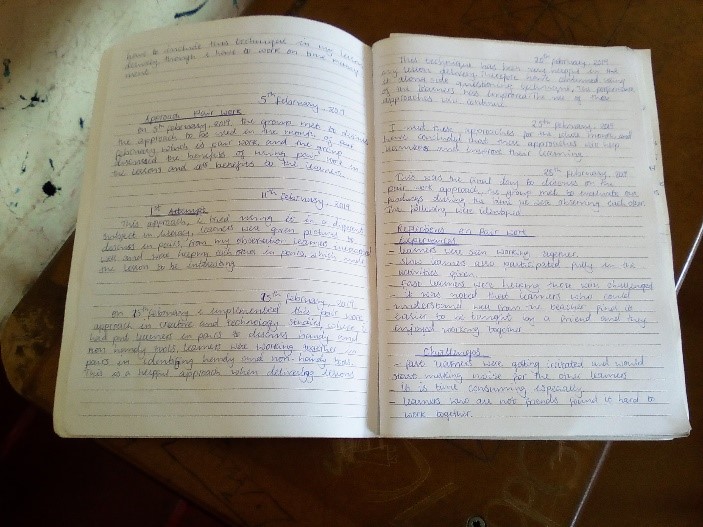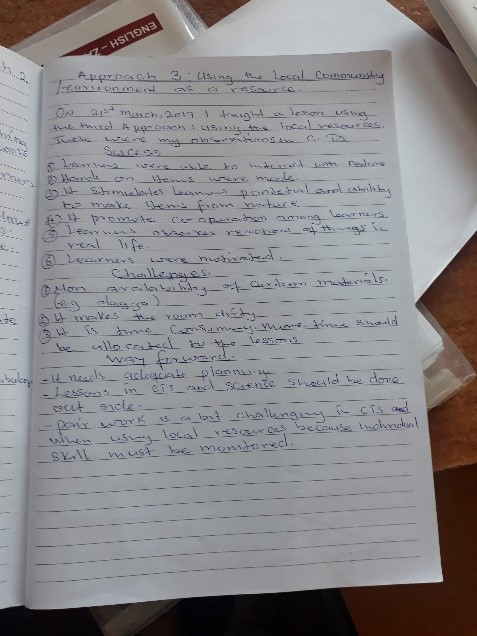Getting started
| Site: | OpenLearn Create |
| Course: | Active teaching and learning for Africa: Getting started |
| Book: | Getting started |
| Printed by: | Guest user |
| Date: | Friday, 21 November 2025, 3:32 PM |
1. List of Acronyms
MoGE: Ministry of General Education (Zambia)
OER: Open Educational Resources
SBCPD: School Based Continuing Professional Development
SPRINT: Schools Program of In-service Training for the Term
TESSA: Teacher Education in sub-Saharan Africa
TGM: Teacher Group Meeting
WVZ: World Vision Zambia
Welcome to this enhanced SPRINT school-based continuing professional development (SBCPD) programme designed to support active teaching and learning in line with the Zambian Revised School Curriculum. Each course is designed to take one term, so the whole programme will take six terms (two school years) and will be the focus of your Teacher Group Meetings (TGMs) or regular professional development sessions.
It is suggested that you study courses 1–3 in year 1 and course 4–6 in year 2. The titles of the courses are:
Year 1
Course 1: Classroom management for learner-centred teaching
Course 2: Inclusive teaching
Course 3: Assessment for learning
Year 2
Course 4: Managing and supporting learner-centred classrooms
Course 5: Literacy across the curriculum
Course 6: Being a reflective practitioner
This SBCPD programme has been developed in Zambia in collaboration with the Ministry of General Education, and 600 teachers and Officials from Chisamba, Kabwe and Mumbwa Districts in Central Province. The Open University (UK) and World Vision Zambia are working with Ministry of General Education as part of a programme called ZEST (Zambia Education School-Based Training) to strengthen the existing SPRINT system and to help teachers implement the Zambian Revised School Curriculum. The work is funded by the Scottish Government and is taking place between 2017 and 2022. The materials can be adapted for use elsewhere, and can be used online, or downloaded as appropriate.
Watch this video from the District Education Standards Officer in Chisamba (Zambia) explaining how teaching practices have changed and how learners have benefitted from this SBCPD programme.
The programme includes short films of activities in different schools in Zambia, and audio recordings about how to use student-centred teaching approaches. These sections are integral to the resources, as they will provide information you need to proceed. You can view or listen to these individually or in groups with other colleagues. After viewing or listening to these sections, it is important that you complete the activity linked to them, reflect on how you can use this in your own teaching and make notes in your Teacher Notebook.
2. School-based continuing professional development (SBCPD)

Teachers working collaboratively in Zambia
Zambia has a well-established system for SBCPD, based around regular TGMs and the appointment of a School In-service Co-ordinator (SIC) in every school. You can adapt these materials to support whatever system you have in place in your country, or use them to support professional development.
SBCPD is based on the view that to implement new ideas teachers need to work together (collaborate), try new approaches in their classroom (practise) and think about and discuss how it went (reflect) (Korthagen, 2017). They need to do this over time. In this way, new approaches gradually become embedded.
This programme will help you make the most of your TGMs. Teachers in Central Province reported that this programme led to more collaboration between teachers, more harmonious relationships, and positive changes in learners, including more participation and in some schools, improved attendance.
Watch this video from a head teacher in Kabwe (Zambia) sharing her experience of working with this programme.
3. The Enhanced SBCPD process
The programme provides resources to support the implementation of the Zambian Revised School Curriculum by supporting teachers in teaching knowledge, skills and values and meeting the aspiration of MOGE that teaching be learner-centred and should actively engage learners. The enhanced SBCPD programme has the same roles, structures and processes as the existing SPRINT system, with two enhancements:
- It includes resources that identify specific topics for discussion at TGMs and provides ideas to support teachers in planning classroom activities. The resources draw on international research into what works in teachers’ CPD. Teachers are supported in systematically developing their skills in active teaching and learning by working through a set of teaching approaches. They all collaborate, practise and reflect in order to improve their teaching.
- All teachers are expected to teach the activities that they have planned, in their classroom, rather than observe a demo lesson. In this way, all teachers are actively involved in SBCPD. The reflection after the lesson, with a small group of colleagues, helps them to plan other activities using the same approach.
In year 1, teachers use TGMs to discuss three active approaches per term, and to collaboratively plan classroom activities which use those approaches. All teachers are then expected to carry out their plan in their own classroom. They discuss their experiences with a colleague and plan another activity using the same approach, for a different grade or subject, using what they have learnt. Rather than a formal observation, teachers are encouraged to work in pairs or threes to arrange short informal peer-observations when they are free, designed to provide mutual support.
This is summarized in the diagram below which presents the lesson study cycle and shows how the enhancements fit in. For each step the Enhanced SBCPD activity (ZEST) is given in orange.

In order to plan classroom activities teachers, head teachers and SICs are supported by a ‘toolkit’ of resources. These include:
- Training Resources
- Facilitator Guides
- TESSA resource library
- TESSA Curriculum Guide
- Revised Zambian School Curriculum
- A notebook in which all involved are encouraged to use to record their responses to TGM activities, their plans for classroom activities and their reflections on their teaching.
The details of these resources are explained in the box below:
|
The Enhanced SBCPD Toolkit Training Resources – sets out a plan for each term for 6 terms (2 years). In term 6, there are suggestions for subsequent years. In year 1 the plan revolves around 9 active teaching approaches. In year 2, the focus is using TESSA resources, supporting literacy, and sustaining the programme. Facilitator Guides – provides support for those tasked with facilitating a TGM. TESSA Resources Library – a set of open educational resources (www.tessafrica.net), versioned for Zambia by the University of Zambia, which provide classroom examples of active teaching and learning. They will be the focus of Term 4. TESSA Curriculum Guide – produced by a team of teachers, College lecturers and MOGE Officers, this maps TESSA Resources to the Revised Zambian School Curriculum. Teacher Notebook – a place for teachers to record responses to TGM activities, their plans for classroom activities and their reflections on their teaching. |
4. Making the most of TGMs
The activities in this programme are designed to be done during TGMs or in preparation for a TGM. There is an assumption that there will be a TGM every 2–3 weeks lasting 1–2 hours; but the SIC and head teacher will work together to organise the programme in your school.
The programme is based on three key principles:
- a good lesson is made up of several different activities
- the activities that make up the lesson should actively engage learners
- it takes time to learn how to organise active teaching and learning in the classroom and to build up confidence.
One teacher will facilitate the TGM which involves leading discussions (not giving a lecture!) and ensuring that the time is used productively. You will need to make notes in the meeting and be prepared to talk about how the plans you made in the previous meeting worked when you tried them in the classroom.
There are additional resources for TGM facilitators which need to be used along with the training resources when planning TGMs.
Activity: Making the most of Teacher Group MeetingsIn pairs think about meetings you have attended or would like to attend. What would a ‘good’ meeting feel like for you? As a group, share your main points. One person could write these on a chalkboard. Agree a list of features of an effective meeting and write them onto a chart which can be displayed in the staffroom. |
Some of the things you might have thought of could be:
- everyone felt able to contribute
- you have learned something new which will help you teach better
- the work done in the meeting has saved you time as you have planned some classroom activities for next week
- you have had the chance to talk about things you were concerned about
- people listened to each other
- the facilitator had planned the meeting and the time was used productively
- the agenda was shared in advance
- the people attending the meeting had prepared themselves in advance.
5. Your Teacher Notebook
During this programme it is suggested that you keep notes in a ‘Teacher Notebook’. You can do this in a conventional notebook, or on your phone or a computer. You might want to write down:
- ideas that may come to you when you are either reading through these training resources, in the workplace, or at any other time
- your responses to activities included in these resources
- notes about the audios you listen to, or the videos you watch as you go along.
- notes about discussions you have with others
- questions that occur to you while you are reading the training resources and planning your lessons
- reflections on what you think or feel about your learning.


Examples of a teacher notebook
Your Teacher Notebook is personal to you and it should be useful to you. You may want to share parts of it with a friend or colleague. There are no rules for keeping a Teacher Notebook: some days you may write a great deal, and at other times only a little. However, you are advised to write notes in such a way that you can understand them later, as this is a key tool to support your personal development
In these resources there are lots of practical ideas for you to try in your teaching, and we hope you will keep practising the teaching approaches that you learn. Using your Teacher Notebook for your plans and reflections will give you a record of everything you try.
6. Reflection
Reflecting on your teaching will help you to become a better teacher and learn from your experiences. As a teacher, when you are planning your lesson you will be thinking: “what do I want my learners to learn and how can I achieve this?” After each activity or lesson, you should also reflect on whether the learners learned what you wanted them to. If they did not, why was this? Can you do something different next time?
Reflection is a key tool in your role as a teacher. Being reflective means that you don’t only need to rely on being observed by others in order to learn from your experiences. Make sure you take time after each lesson, or at the end of the day, to think about what worked well or what did not. Use your Teacher Notebook to make notes. You can also take pictures with your phone about how you presented information on the chalkboard, on a display you prepared, or on a group of learners’ work. This will help you to reflect when you share your experiences with colleagues. Try to find time between TGMs to speak with colleagues about your thoughts and reflections. Asking a colleague to observe your teaching and give you constructive feedback can also complement and reinforce your own reflections on your teaching.
Below are a few questions that can help you to reflect on your teaching. As you use these questions more regularly you will not need to refer to them as often, as the reflection process will happen naturally after lessons. You might want to write them in your Teacher Notebook to help you refer to them regularly. It is important to be honest in answering these questions.
- How did the lesson I planned work in practice?
- Which activities worked well in my lesson? Why?
- Which activities did not work as well as I planned? Why? What can I do to improve this next time?
- Did I have all the materials I needed? What else would have been useful?
- Which learners worked/participated well in the lesson? Why?
- Which learners found the activities difficult? What can I do to help them?
- What do I need to remember next time when I am planning a similar lesson?
To support your reflection and progress in the programme we suggest you create a table in your Teacher Notebook for you to complete regularly: My record of using the teaching approaches. You can find more information on how to use the table to support your own professional development later in these training resources.
|
Developing Learner-Centred Teaching |
||||||
|
Teaching Approaches |
Date the approach introduced
|
Date of 1st attempt
|
Date of 2nd attempt
|
Date of 3rd attempt
|
Date of 4th attempt
|
Confident using this approach |
|
1 - Questioning |
|
|
|
|
|
|
7. What will you learn from this enhanced SPRINT programme?
After taking part in this programme you will have:
- been introduced to practical active teaching strategies to support problem-solving, creativity and thinking skills
- become more learner-centred in your approach to teaching
- developed your own facilitation skills
- worked collaboratively with colleagues to develop your own practice
- developed as a reflective practitioner
- developed resources to support your teaching
- developed your ICT skills
- developed an understanding of formative assessment and how to use the assessment results to inform your planning of learning
- thought about how to support literacy across the curriculum, increasing the chances of children being able to access the whole curriculum.
8. Teacher education in sub-Saharan Africa (TESSA)
TESSA is a network of teachers and teacher educators, working towards improving learning and teaching in sub-Saharan Africa. At the heart of the network is a bank of free, adaptable resources, linked to the primary syllabus and secondary science curricula, which provide activities and case studies for teachers to try in the classroom. The resources are available on the website (www.tessafrica.net) and can be downloaded and stored on computers, local servers, or mobile phones.
In year 2 of this programme you will be encouraged to use the TESSA open education resources (OER), which will give you ideas for classroom activities that will encourage active learning and teaching.